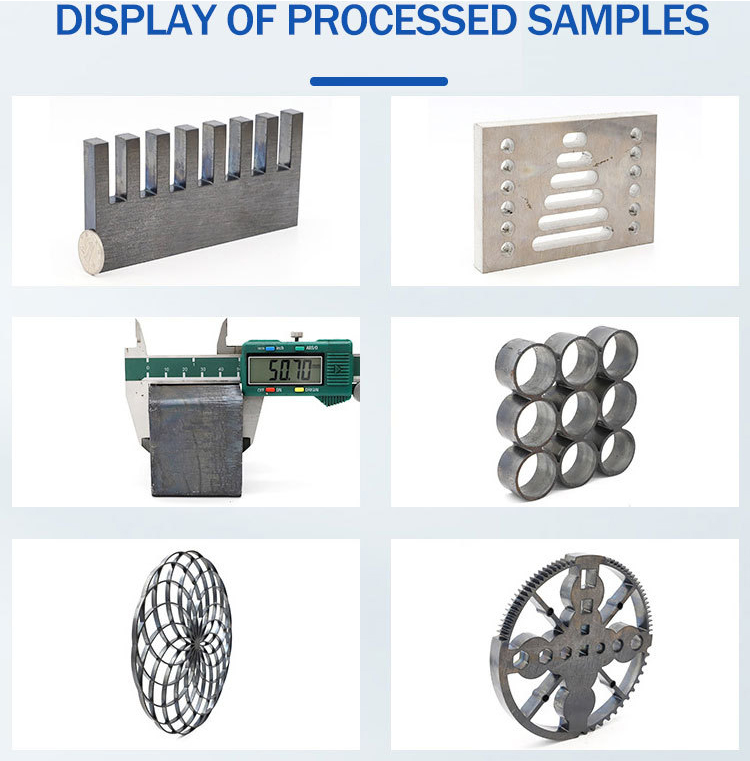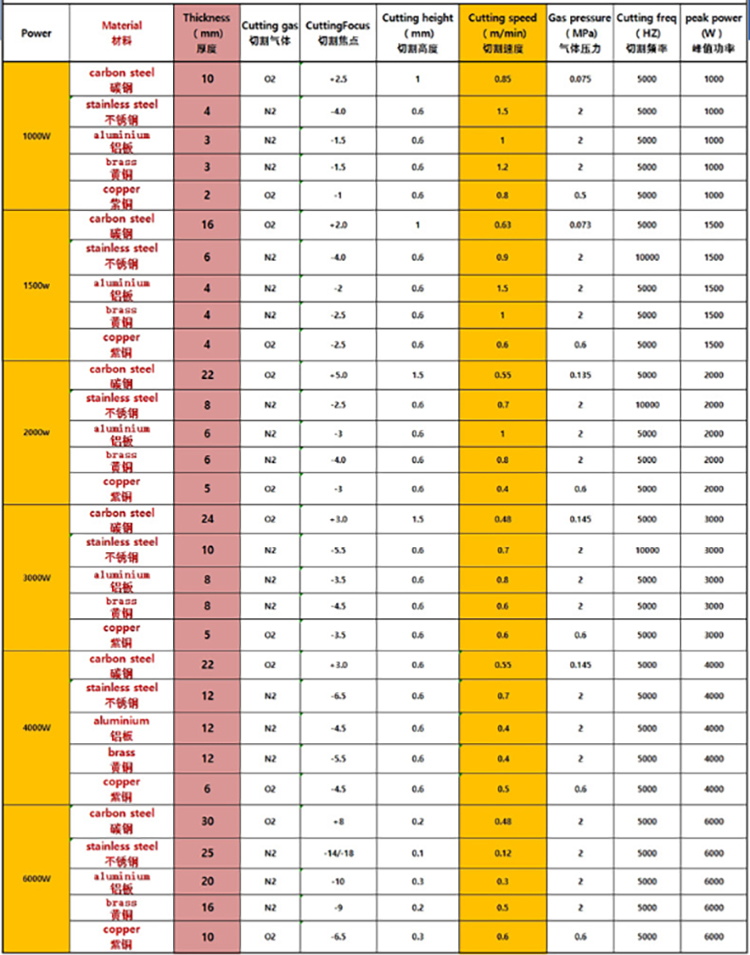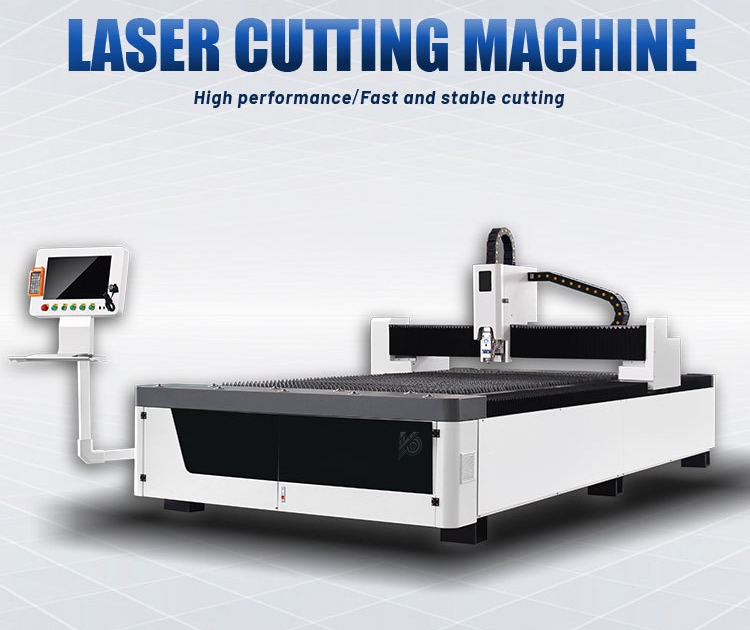Industry-news
What Materials Can Be Cut by Laser Cutting? What is the Cutting Effect?
What Materials Can Be Cut by Laser Cutting? What is the Cutting Effect?
Laser cutting is a highly precise and efficient method used for cutting a wide variety of materials in industries such as manufacturing, automotive, aerospace, and metalworking. The technology uses a focused laser beam to melt, burn, or vaporize material along the desired cutting path. In this article, we’ll explore the types of materials that can be cut by laser cutting and discuss the cutting speed, quality, and effect on different materials.
Materials That Can Be Cut by Laser Cutting
Laser cutting is incredibly versatile and can handle a broad range of materials. Below are some of the most common materials that can be cut using this advanced technology:
1. Metals
- Mild Steel: One of the most common materials for laser cutting. Mild steel is easily cut and offers clean, smooth edges. The cutting speed varies depending on the thickness of the material.
- Stainless Steel: Stainless steel can also be cut efficiently with lasers. It requires more power than mild steel due to its higher melting point. The laser cuts stainless steel with high precision, producing smooth edges.
- Aluminum: Aluminum is another material that can be cut with laser technology. It has a lower melting point, making it quicker to cut than some other metals. However, the reflective surface of aluminum can cause some challenges for laser cutting, requiring special settings.
- Copper and Brass: These metals are more difficult to cut due to their high reflectivity, but with a fiber laser cutter, they can be effectively processed. Cutting copper requires slower speeds to achieve clean results.
- Titanium: Titanium is challenging to cut because of its high melting point, but with the right laser and settings, it can be done with great precision, producing smooth and clean cuts.
2. Plastics
- Acrylic: Acrylic is one of the most common plastics for laser cutting. It cuts smoothly and quickly, offering clean edges. Acrylic is often used for signage, displays, and decorative items.
- Polycarbonate: This material can be laser cut, but care must be taken to prevent melting or discoloration. Polycarbonate cuts at moderate speeds and requires adjustments in laser power and speed.
- PVC: Laser cutting PVC can be more challenging due to the potential for harmful fumes. The laser cuts through PVC at moderate speeds but requires ventilation to ensure safe operation.
3. Wood and Wood Composites
- Wood: Laser cutting is widely used to cut natural wood, plywood, MDF, and other wood composites. The cutting speed varies based on the thickness of the wood. The laser produces clean edges and fine details, making it ideal for decorative items, furniture, and engravings.
- Bamboo and Cork: These materials are also commonly cut with lasers. Bamboo and cork respond well to laser cutting, resulting in clean, smooth edges.
4. Stone, Glass, and Ceramics
- Stone: Laser cutting can be used to cut stone, marble, and granite, but it is a slow process due to the material's hardness. The laser creates intricate designs, but the cutting speed is significantly slower than with metals or plastics.
- Glass: Glass can be laser cut, but it requires a special technique to avoid cracking. The cutting process is slower compared to softer materials, and the laser is often used to score glass for further breaking.
- Ceramics: Laser cutting of ceramics is also possible, but it is slower and may require higher power settings. Ceramics are prone to cracking, so precision and proper settings are essential.
5. Fabrics and Textiles
- Cotton, Leather, and Synthetic Fabrics: Laser cutting is commonly used to cut fabrics and textiles, as it offers precision and the ability to cut intricate patterns without fraying the edges. Leather, cotton, polyester, and nylon can be easily cut, making laser cutting ideal for apparel manufacturing, upholstery, and accessories.
6. Composites and Carbon Fiber
- Carbon Fiber: Laser cutting of carbon fiber is effective but requires a specialized laser system to cut the material precisely. The laser cuts carbon fiber at slower speeds but can produce clean, accurate cuts with minimal heat-affected zones.
- Fiberglass: Fiberglass is another material that can be cut by laser cutting, but it often requires slower speeds to avoid overheating. The process creates fine edges and precise cuts suitable for complex designs.
Cutting Speed and Effect for Different Materials
The cutting speed and final effect of laser cutting vary based on the material type, thickness, and laser technology used. Here’s a breakdown of the typical cutting speeds and effects for various materials:
Metals
- Mild Steel: Cutting speed is fast for thin sheets (up to 10mm), and slow for thicker sheets (over 10mm). The edge quality is generally smooth, with minimal burrs on thinner materials.
- Stainless Steel: Cutting speed is slower compared to mild steel. Stainless steel produces smooth edges with minimal heat-affected zones, although it may develop slight burrs on thicker cuts.
- Aluminum: Aluminum can be cut quickly with lasers, but the edge may be slightly rough due to the material’s reflective nature. Thin sheets are cut with high speed, but thicker sheets require slower speeds.
- Titanium: Titanium is slower to cut due to its hardness, and the edge quality is excellent but may require additional post-processing on thicker materials.
Plastics
- Acrylic: Acrylic cuts at a high speed, with excellent edge quality and no melting. The cutting process is fast and produces smooth, clean edges.
- Polycarbonate: Cutting polycarbonate is slower than acrylic, and the edges may show some discoloration or melting if not properly controlled.
- PVC: Laser cutting PVC produces moderate speed and clean cuts, but it requires proper ventilation due to the toxic fumes released.
Wood and Wood Composites
- Wood: Cutting speed varies with the thickness, but laser cutting of wood is fast for thin sheets and produces smooth, clean edges. Thicker wood may require slower cutting speeds to avoid burning or charring.
- MDF/Plywood: MDF and plywood can be cut quickly, producing clean edges without excessive burning. However, the cutting speed may be slower compared to solid wood.
Stone, Glass, and Ceramics
- Stone: Cutting stone and marble is a slow process. It’s typically used for engraving rather than cutting through thick materials.
- Glass: Laser cutting of glass is slow and primarily used for scoring, not cutting through thick sheets. The effect is clean but may require additional processes to break the glass.
- Ceramics: Like glass, ceramics are cut slowly, and the process requires precise settings to prevent cracking. Edge quality is high with minimal post-processing needed.
Fabrics and Textiles
- Cotton and Leather: Laser cutting of cotton and leather is fast, producing fine edges with no fraying. The cut edges are usually smooth and clean, ideal for apparel and accessories.
- Synthetic Fabrics: Synthetic materials cut quickly, with no fraying or melting if the settings are correct.


Conclusion
Laser cutting is an excellent choice for many industries because it offers precision, speed, and the ability to cut a variety of materials. Whether you are cutting metals, plastics, wood, or textiles, the cutting effect varies based on the material and thickness. With advancements in laser cutting technology, the process continues to evolve, offering faster speeds, cleaner edges, and more intricate designs.
By understanding the materials that can be cut and the expected results, manufacturers can make better decisions about which cutting technology to use for their projects, ensuring optimal performance and high-quality results.






